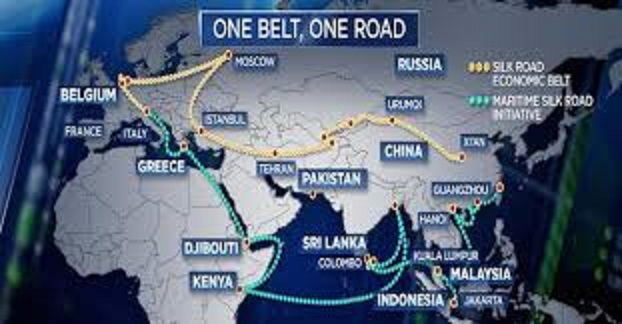An article By Martin Hart-Landsberg
China’s growth rate remains impressive, even if on the decline.
The country’s continuing economic gains owe much to the Chinese state’s (1) still considerable ability to direct the activity of critical economic enterprises and sectors such as finance, (2) commitment to policies of economic expansion, and (3) flexibility in economic strategy.
It appears that China’s leaders view their recently adopted One Belt, One Road Initiative as key to the country’s future economic vitality. However, there are reasons to believe that this strategy is seriously flawed, with working people, including in China, destined to pay a high price for its shortcomings.
China grew rapidly over the decades of the 1980s, 1990s, and 2000s with production and investment increasingly powered by the country’s growing integration into regional cross-border production networks. By 2002 China had become the world’s biggest recipient of foreign direct investment and by 2009 it had overtaken Germany to become the world’s biggest exporter.
Not surprisingly, the Great Recession and the decline in world trade that followed represented a major challenge to the county’s export-oriented growth strategy.
The government’s response was to counter the effects of declining external demand with a major investment programme financed by massive money creation and low interest rates. Investment as a share of GDP rose to an all-time high of 48 percent in December 2011 and remains at over 44 percent of GDP.
But, despite the government’s efforts, growth steadily declined, from 10.6% in 2010 to 6.7% in 2016, before registering an increase of 6.9% in 2017.
Beginning in 2012, the Chinese government began promoting the idea of a “new normal”—centered around a target rate of growth of 6.5%. The government claimed that the benefits of this new normal growth rate would include greater stability and a more domestically-oriented growth process that would benefit Chinese workers.
However, in contrast to its rhetoric, the state continued to pursue a high grow rate by promoting a massive state-supported construction boom tied to a policy of expanded urbanization. New roads, railways, airports, shopping centers, and apartment complexes were built.
As might be expected, such a big construction push has left the country with excess facilities and infrastructure, highlighted by a growing number of ghost towns. As the South China Morning Post describes: (https://bit.ly/2St6rzP)
Six skyscrapers overlooking a huge, man-made lake once seemed like a dazzling illustration of a city’s ambition, the transformation of desert on the edge of Ordos in Inner Mongolia into a gleaming residential and commercial complex to help secure its future prosperity.
At noon on a cold winter’s day the reality seemed rather different.
Only a handful of people could be seen entering or exiting the buildings, with hardly a trace of activity in the 42-storey skyscrapers.
The complex opened five years ago, but just three of its buildings have been sold to the city government and another is occupied by its developer, a bank and an energy company. The remaining two are empty–gates blocked and dust piled on the ground.
Ordos, however, was just one project in China’s rush to urbanize. The nation used more cement in the three years from 2011 to 2013 than the United States used in the entire 20th century. . . .
Other mostly empty ghost towns can be found across China, including the Yujiapu financial district in Tianjin, the Chenggong district in Kunming in Yunnan and Yingkou in Liaoning province.
This building boom was financed by a rapid increase in debt, creating repayment concerns. Corporate debt in particular soared, as shown below, but local government and household debt also grew substantially.
The boom also caused several industries to dramatically increase their scale of production, creating serious overcapacity problems. As the researcher Xin Zhang points out:
More
A Critical Look at China’s One Belt One Road Initiative
RELATED ARTICLES




